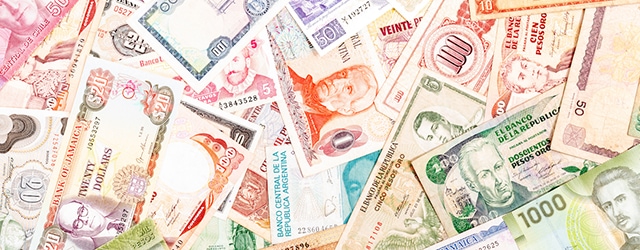Difficult economic conditions didn’t keep Latin America’s best banks from growing in 2018. Strategic focus is on digitization and outreach to the unbanked.

Latin American banks managed to remain profitable and in growth mode in 2018, despite challenges that included an ongoing economic meltdown in Venezuela, Brazil’s slow recovery from a short recession, the Trump administration’s tense relations with Mexico and the devastation caused by two major hurricanes that slammed several Caribbean islands the year before.
Against all this, the region’s bankers again proved their resilience—forged from their accumulated experience during multiple crises in the past—and governments were better prepared, with appropriate regulations to lessen fallout from both external and internal shocks. On most fronts, 2018 was a positive, albeit challenging, year for the Latin American banking system.
As an engine for development, however, the system still has much to accomplish. In particular, Latin America’s large unbanked population poses both a challenge and an opportunity. In Mexico, an estimated 60% of the population still has no access to traditional banking channels. The new administration of President Andres Manuel Lopez Obrador is taking steps to address the issue, including policy initiatives to reduce Mexicans’ high cash usage and foster credit access. Latin American banks have continued to invest in technology to strengthen the digital channels they feel will be key to attract new market segments and court the unbanked.
The situation is improving, according to the 2018 Financial Inclusion Report of the Latin American Banking Federation (Felaban). Using data collected in 2017 from banks in 17 countries, the report shows regional per capita banking deposits doubled over the past decade, and Latin American banking sector credits reached 38.7% of regional GDP. Felaban acknowledges, however, that an appropriate digital-transformation drive is still required to close the region’s financial inclusion gap.
BBVA, Global Finance’s Best Bank for the region in 2018, credits a number of digital products and services with boosting its regional performance last year, highlighted by a 9.7% year-on-year increase in South American credit investments and an 11.8% jump in assets. At the end of 2018, BBVA’s sales on digital channels represented 54% of its total sales in South America and 37% of its total in Mexico, where the figure reportedly has tripled over the past two years alone. The bank has strengthened its digital presence and integrated several of its platforms. It also launched a regional Open Innovation program to support fintech startups, which it predicts will create the technology allowing it bank to continue creating disruptive customer solutions.
While international banks such as BBVA have made sizable technology investments in the region, local banks in some markets are counting on their local knowledge to help them compete for customers. One of these is Banorte, our pick for top bank in Mexico. “At Banorte, we are proud of being a Mexican bank working for Mexicans,” CEO Marcos Ramirez tells Global Finance. Banorte is Mexico’s second-largest bank and one of very few locally owned private financial institutions. “We understand our client’s culture, we are part of it, and work every day to understand their needs and make it easier for our customers to bank with us,” Ramirez adds. “All our decisions are made locally, allowing us to have a streamlined decision process.”
Bradesco, Brazil’s second-largest private bank, cites outreach to the unbanked, or “democratization of credit,” as one of its key business drivers. Since its beginning, Bradesco’s philosophy has been “to be a bank whose door is always open, welcoming everyone who comes in, regardless of their financial situation, with personalized service and according to the segmentation appropriate to the client’s profile,” the bank said in its submission to Global Finance. Accordingly, Bradesco maintains a presence in all of Brazil’s municipal districts, but digital banking has become an overwhelming driver of business. Digital channels accounted for 96% of transactions in 2018, a 17% increase over the previous year.
Other leading banks in the region are moving in a similar direction. Banco Mercantil Santa Cruz launched a new internet banking platform as well as a mobile banking application, to take the win for Best Bank in Bolivia. Our winner in Argentina, Banco Santander Rio, opened four digital branches, while Banco Itaú Paraguay launched the first digital agency in that country. El Salvador’s Banco Cuscatlán has enhanced its digital platforms, with penetration expected to rise to 50% by 2021, from 11% last year. Colombia’s Banco de Bogotá has introduced three new digital products for mortgages, free-purpose loans and payroll loans, while also participating in a blockchain-technology exploration project with the country’s central bank to implement an immediate interbank payment system.
Financial inclusion is also a priority for our winner in Honduras, Banco Ficohsa, which in 2018 launched Tengo, a mobile application, with an additional 300 points of service to perform financial transactions. The aim is to attract consumers with limited or no access to banks. After launching the first Agile Lab in the English-speaking Caribbean to accelerate its digital agenda, National Commercial Bank of Jamaica now has a dozen such projects, focused on developing solutions such as digital account openings and digital lending. RBC Royal Bank last year become first bank in Barbados to offer contactless-enabled point-of-sale devices for merchants, an initiative its Canadian parent pioneered across the Caribbean, which contributed to its win as Best Bank in Barbados.
In Costa Rica, BAC Credo-matic has supported economic development through innovative products, introducing contactless payments and e-commerce solutions in a country with 86% internet penetration. Already, 70% of the bank’s point-of-sale systems in Central America are contactless-ready and 80% of its card base is contactless. Likewise in Guatemala, Banco Agromercantil, majority-owned by Colombia’s Bancolombia, is deploying technology to create new offerings. It now operates BAM Chat, a digital tool that allows consumers to conduct live chats with bank staff.
These efforts are designed to increase banking-sector efficiency along with facilitating relationships with the unbanked population. Some experts warn, however, that the two objectives could clash as aggressive digitalization leads to branch closures, particularly in rural communities where the banking sector’s presence is already low. The result: Many communities could find themselves without a bank to support local development. The key, some close observers argue, is for banks to promote the use of multiple banking channels, including some in-branch transactions, rather than migrate exclusively to digital platforms.
Small to medium-size enterprises also present opportunities for our Best Bank winners in Latin America. Peru’s Banco BBVA Continental launched a new online channel and a mortgage product for real estate investments by SMEs in 2018. In the Dominican Republic, Banreservas has sponsored conferences to review opportunities for SMEs and has launched custom-tailored financial tools it expects will help make the sector more competitive.
Climate change and sustainable development are growing concerns in Latin America, as well. Banks in the region are responding with their own environmental initiatives, as well as supporting projects in the communities they serve. The International Finance Corporation (IFC) last year structured a $115 million transaction, along with the OPEC Fund for International Development, for Nicaragua’s LAFISE Bancentro to intermediate funds for SMEs and projects that meet smart-climate criteria. The transaction marked the largest ever between the IFC a Central American financial institution.
“We have a broad-based product offering that is suited to diverse financial needs and can be tailored to both a small, family-owned business as well a corporate syndication looking to invest in tools, technologies and working capital, with best practices that seek social and environmental conservation,” says Roberto Zamora, LAFISE Bancentro’s CEO. The bank’s financial product, Ecocreditos, is directed toward diverse economic sectors, including cattle farming, tourism, coffee, transportation, renewable energy and cleaner production. “With this offering, we have been able to finance biodigesters, solar panels, efficient lighting and cooling systems and process automatization, among others,” Zamora said.
Ecuador’s Produbanco introduced the country’s first “green” savings account last year in a bid to attract environmentally conscious customers. For the fourth year in a row, the bank received a Carbon Neutral Certification, granted to institutions that promote activities that reduce carbon emissions and offset their own. Produbanco offset 100% of its annual emissions by sponsoring 950 hectares of forest, while also spearheading energy-consumption awareness campaigns nationwide. Santander Uruguay has implemented initiatives adopted by its Spanish parent, which has made fighting climate change one of its core goals. The bank’s waste and emissions reductions achieved its 2016-2018 environmental-efficiency targets.
Banks in Latin America kept pace with their recent corporate social responsibility (CSR) investment initiatives last year, with education accounting for a large share. A Felaban regional report on financial-education initiatives in 2018 noted that 97% of financial-education programs offered by banks surveyed in the region were delivered free of charge to attendees, and self-financed by the various financial institutions.
Banco General, the largest locally controlled private bank in Panama, dedicated more than 40% of its CSR budget to education programs. In the Bahamas, CIBC FirstCaribbean, whose 11% profit hike in 2018 was its best performance in 11 years, supported the relaunch of its national financial-literacy campaign, which focuses on personal finance and banking for consumers.
Belize Bank granted 20 scholarships in 2018, bringing the total to date to 120 under its annual scholarship program. And Republic Bank in Trinidad and Tobago, offers RS Teen, a savings account for teenagers, as well as the Youth Link Apprenticeship Program for secondary-school students, which launched in 1986.
Banco de Chile has taken a different path with its CSR investments, focusing on support for the Teletón, an annual telethon that raises funds for people with disabilities. The bank has sponsored the event continuously for the past 40 years. Last year, more than 9,000 Banco de Chile employees worked as volunteers to support the highly rated televised fundraiser.
In the Caribbean, some CSR investments have focused on community rebuilding and economic recovery since Hurricanes Maria and Irma wiped out critical infrastructure and devastated the economy in places like Puerto Rico and the US Virgin Islands two years ago. Banco Popular de Puerto Rico’s move to restore its services, reduce ATM fees by 50% and introduce credit-repayment grace periods, all while operating under emergency conditions, strengthened customer loyalty and increased its customer base. The bank’s profitability has been supported by reconstruction spending and the beginnings of an economic recovery.
In the US Virgin Islands, FirstBank Virgin Islands is earmarking much of its CSR budget for its Community Reinvestment Program, which supports projects and initiatives focused on education and financial literacy, housing and economic development, community and social development, and environmental and community revitalization.
In Venezuela, where US sanctions and government-policy failures have created an economic debacle, Mercantil Banco Universal has thus far maintained its profitability streak amid the crisis by adhering to sound financial-management policies. It has also continued a program of CSR investments: The bank’s social-development initiatives include programs to aid children, the elderly and the disabled in a country the World Bank predicts will experience a 25% economic contraction this year and a 10 million percent rise in consumer inflation.
While digitization has enabled many of Latin America’s top banks to register positive performance, often under difficult economic conditions, bankers may need to once again consult their well-worn volatility-resilience handbooks in 2019.
Economists predict Latin American banks are in for some choppy waters ahead. BBVA Research lowered its regional growth outlook to 2.1% in 2019, a 0.3% downward adjustment from previous expectations. Citing US-China trade tensions and central banks’ more dovish policy positions, among other factors, Goldman Sachs has also lowered its growth outlook for several large Latin American markets, predicting Mexico and Brazil will grow by only 2.2% and 1.5%, respectively.
“We expect challenging credit conditions to carry on in 2019 due to trade tension … and commodity price trends,” concluded a Standard & Poor’s Global Banks 2019 Outlook discussing Latin American banks. The rating agency expects risks in the region to “remain elevated and potentially worse” this year.
BEST BANKS IN LATIN AMERICA 2019 | |
|---|---|
| Argentina | Banco Santander Rio |
| Bahamas | CIBC FirstCaribbean |
| Barbados | RBC Royal Bank |
| Belize | Belize Bank |
| Bolivia | Banco Mercantil Santa Cruz |
| Brazil | Bradesco |
| Chile | Banco de Chile |
| Colombia | Banco de Bogotá |
| Costa Rica | BAC Credomatic |
| Dominican Republic | Banreservas |
| Ecuador | Produbanco |
| El Salvador | Banco Cuscatlán |
| Guatemala | Banco Agromercantil |
| Honduras | Banco Ficohsa |
| Jamaica | National Commercial Bank |
| Mexico | Banorte |
| Nicaragua | Banco LAFISE Bancentro |
| Panama | Banco General |
| Paraguay | Banco Itaú Paraguay |
| Peru | BBVA Continental |
| Puerto Rico | Banco Popular de Puerto Rico |
| Trinidad & Tobago | Republic Bank |
| Turks & Caicos | Scotiabank Turks & Caicos |
| Uruguay | Santander Uruguay |
| US Virgin Islands | FirstBank Virgin Islands |
| Venezuela | Mercantil Banco Universal |



